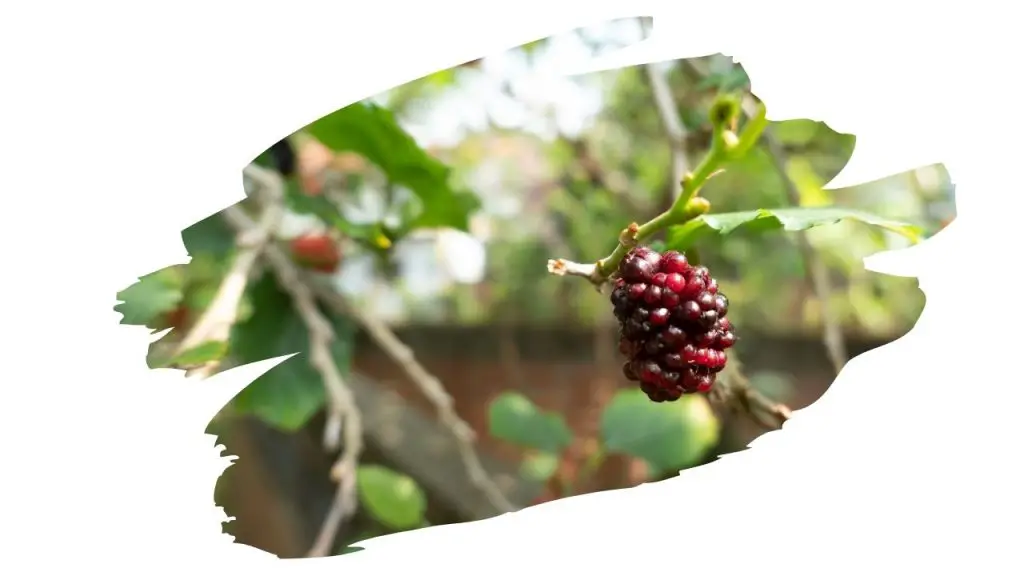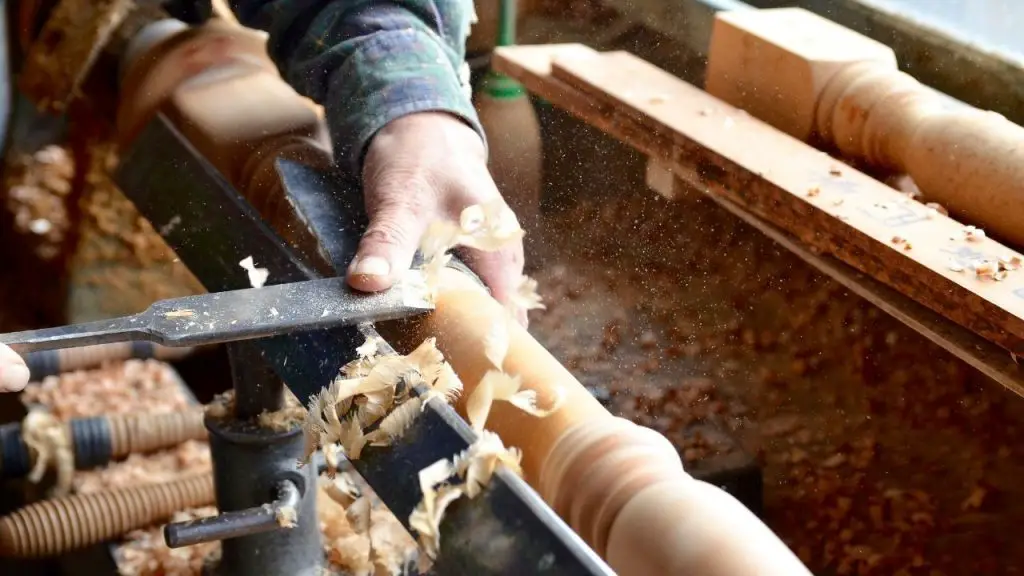Mulberry trees are probably better known for their edible berries than for their lumber. Still, this trees durable golden brown lumber is also used to make strong furniture, like tables and chairs.
But is mulberry wood good for carving as well?
Thanks to its dense close grain, mulberry wood is a good choice for carving. Its dense grain will allow it to take on detailed designs – making it great for wood turning.
Still, there are a range of different wood carving styles out there… and mulberry wood isn’t suitable for all of them.
So lets take a better look at what you can make (and carve) out of this domestic wood type…

This post may contain affiliate links to products that we receive a commission for (at no additional cost to you). Learn more here.
Is Mulberry Good For Woodworking?
Yes it is. Red Mulberry wood is a tough and durable lumber that can be relied upon to handle a lot of wear and tear – and this is thanks to its fairly high Janka rating.
And what is a Janka rating? Well, the Janka hardness rating scale is how the building industry measures the toughness of wood flooring. Now, the higher the rating, the tougher the wood. And the tougher the wood, the better it is at being able to take on dents, scrapes, and scratches.
Red Mulberry – the type most often referred to in the United States and United Kingdom – has a rating of 1680 lbfs. Which, in plain language, means that this lumber can take on up to 1680 pounds of force without taking on a dent.
Compare that to other strong wood types such as Oak, (which has a Janka rating of 1290 lbfs), and Mahogany (which clocks in at a Janka hardness rating of 800 lbfs).
Related Post: What You Need To Know About Alder Vs Mahogany Wood
What Are Some Common Mulberry Tree Wood Uses?
Thanks to its rot resistant timber, mulberry wood can be used to make outdoor structures such as fence posts or garden benches.
Its resistance to rot is why it can hold up so well under wind and rain. Moreover, exposure to sunlight turns the yellow heartwood of mulberry into a deep amber-ish brown that can give it a really rustic appearance.
Is The Mulberry Tree Classed As Hard Or Soft Wood? This deciduous wood species is classed as a hardwood. This is because hardwood generally comes from deciduous trees (i.e. trees that shed their leaves in autumn/winter).
So Can You Really Carve Mulberry Wood? Or Is The Wood Too Hard?
It depends on the type of wood carving you plan on doing.
There are many different wood carving methods, such as chip carving, relief carving, and whittling.
However, if you want to carve with mulberry wood, it is best used for a wood carving style called wood-turning.
Wood turning involves using a wood lathe to ‘turn’ wood around consistently (kind of like cooking meat on a spit).
And as the wood turns around, you use a tool to carve the wood into any shape of your choice.

But Isn’t Mulberry Tree Wood Poisonous?
Unless it is ingested, the red mulberry tree isn’t toxic. However, it all depends on the type of mulberry species.
White Mulberry is the slightly smaller cousin of Red Mulberry trees. And white mulberry pollen is a huge cause of discomfort for people who suffer from allergies and hayfever. And even the leaves of this particular mulberry tree species can irritate the skin.
However, when it comes to Red Mulberry, as long as you aren’t ingesting the wood sap from this tree, then it isn’t toxic.
And if red mulberry sawdust is inhaled it poses no greater risk to your health than if you inhaled any other type of sawdust.
Although that is not to say that you will want to be taking in big whiffs of this (or indeed any) wood dust. In other words, if a lot of red mulberry wood dust is likely to be kicked up, you should wear a quality dust mask or dust respirator.
So Just To Sum Up…
If you want a wood type that is great for wood turning, then Red Mulberry ranks right up there as a first class lumber.
Plus, the intensity of lathe work won’t cause this durable timber to crack or split (even after it has been seasoned and dried). So you can go ahead and have fun carving this crafty piece of wood!
References
https://gardeningsolutions.ifas.ufl.edu/plants/trees-and-shrubs/trees/mulberry.html
https://www.oardc.ohio-state.edu/weedguide/single_weed.php?id=77



